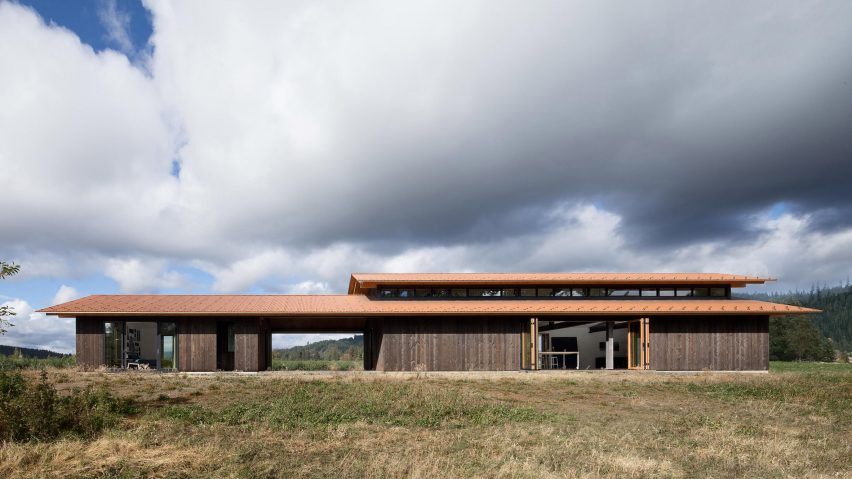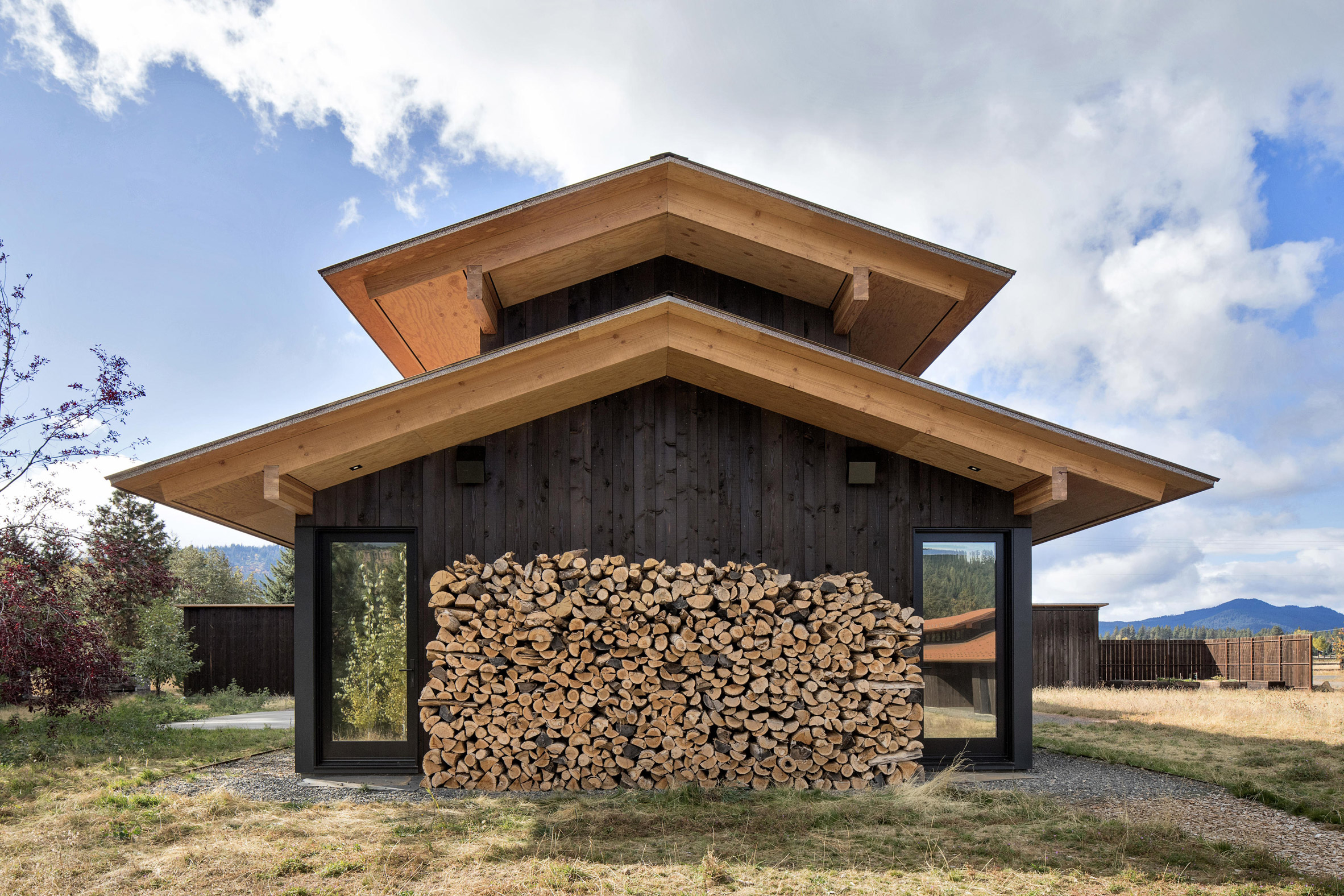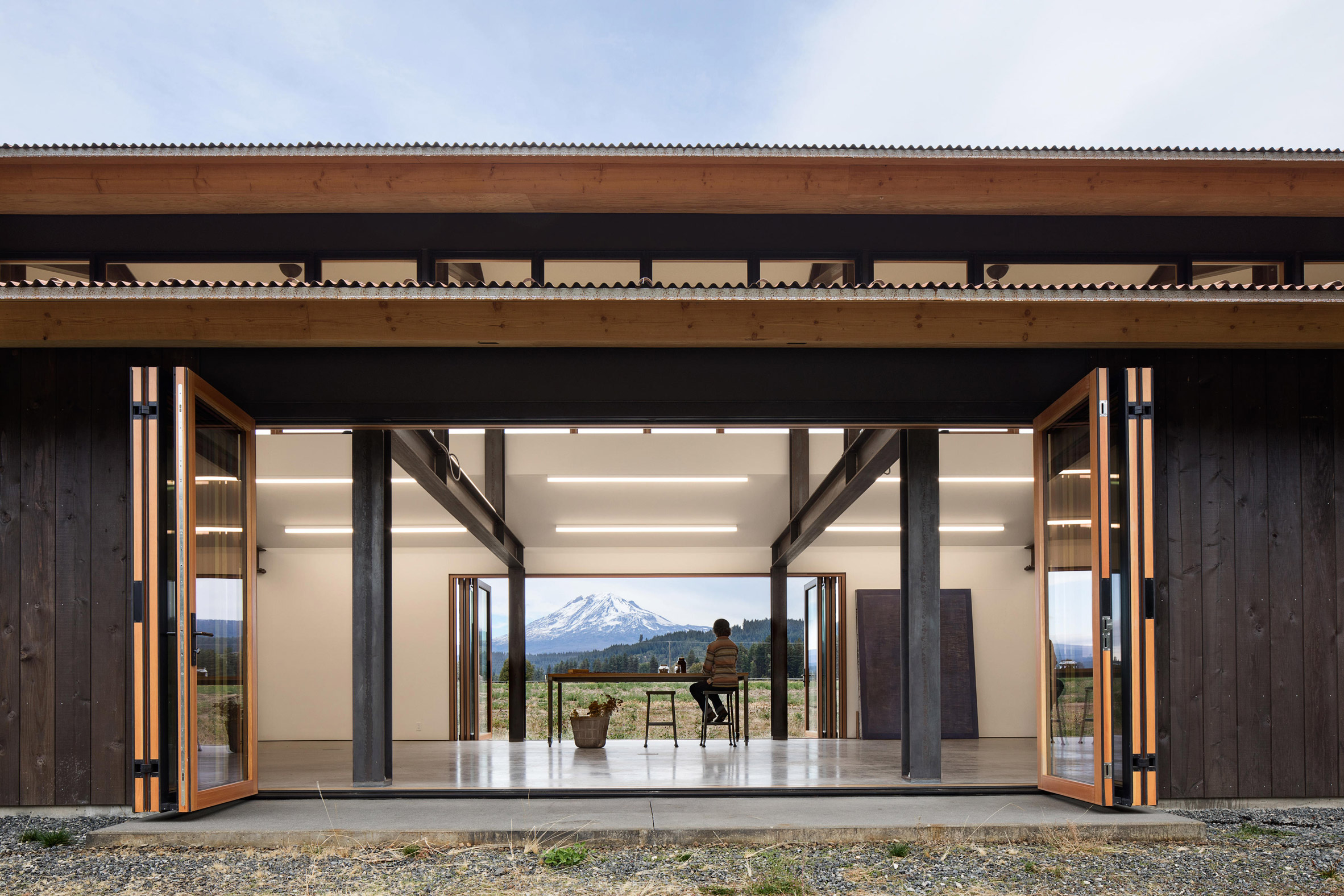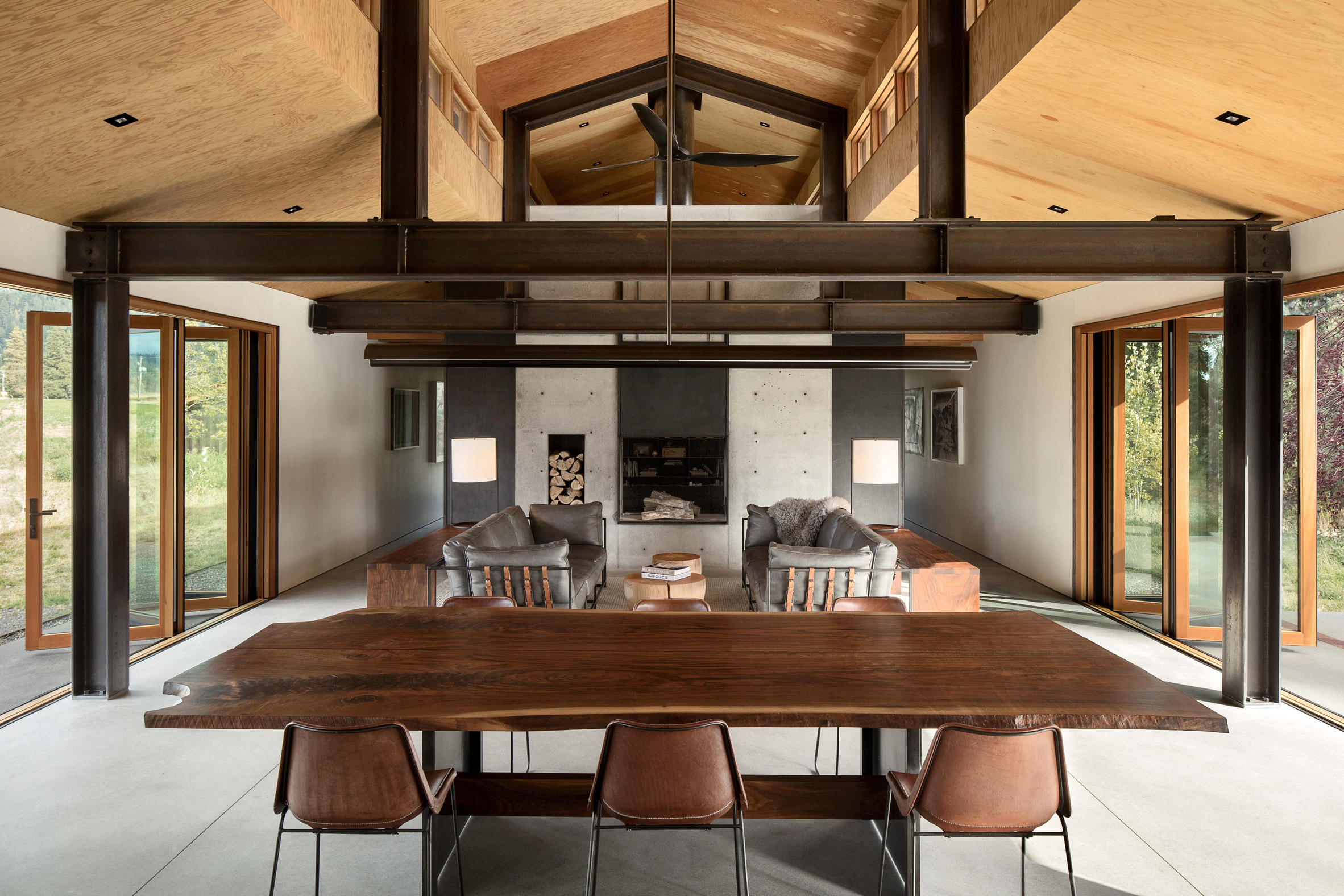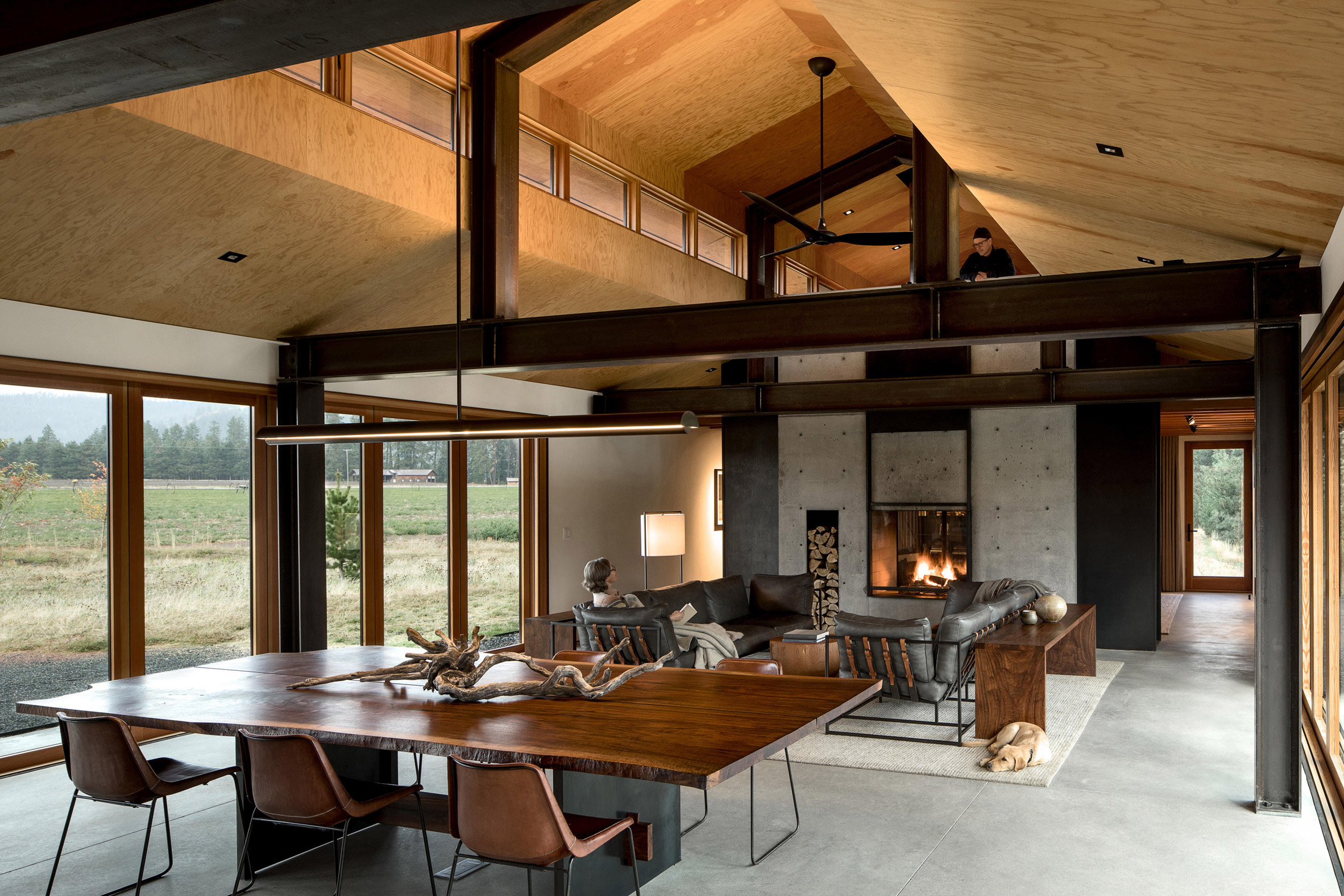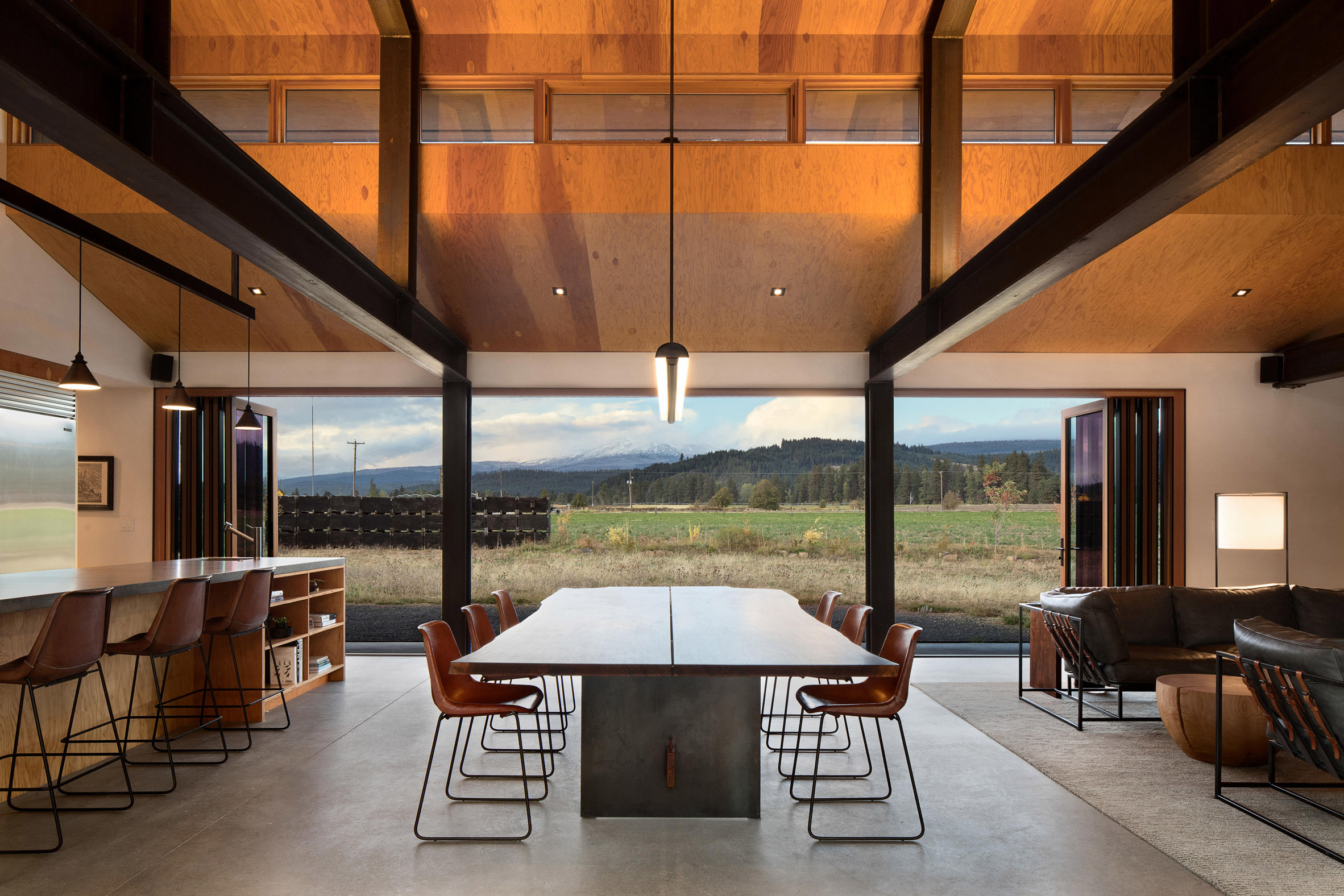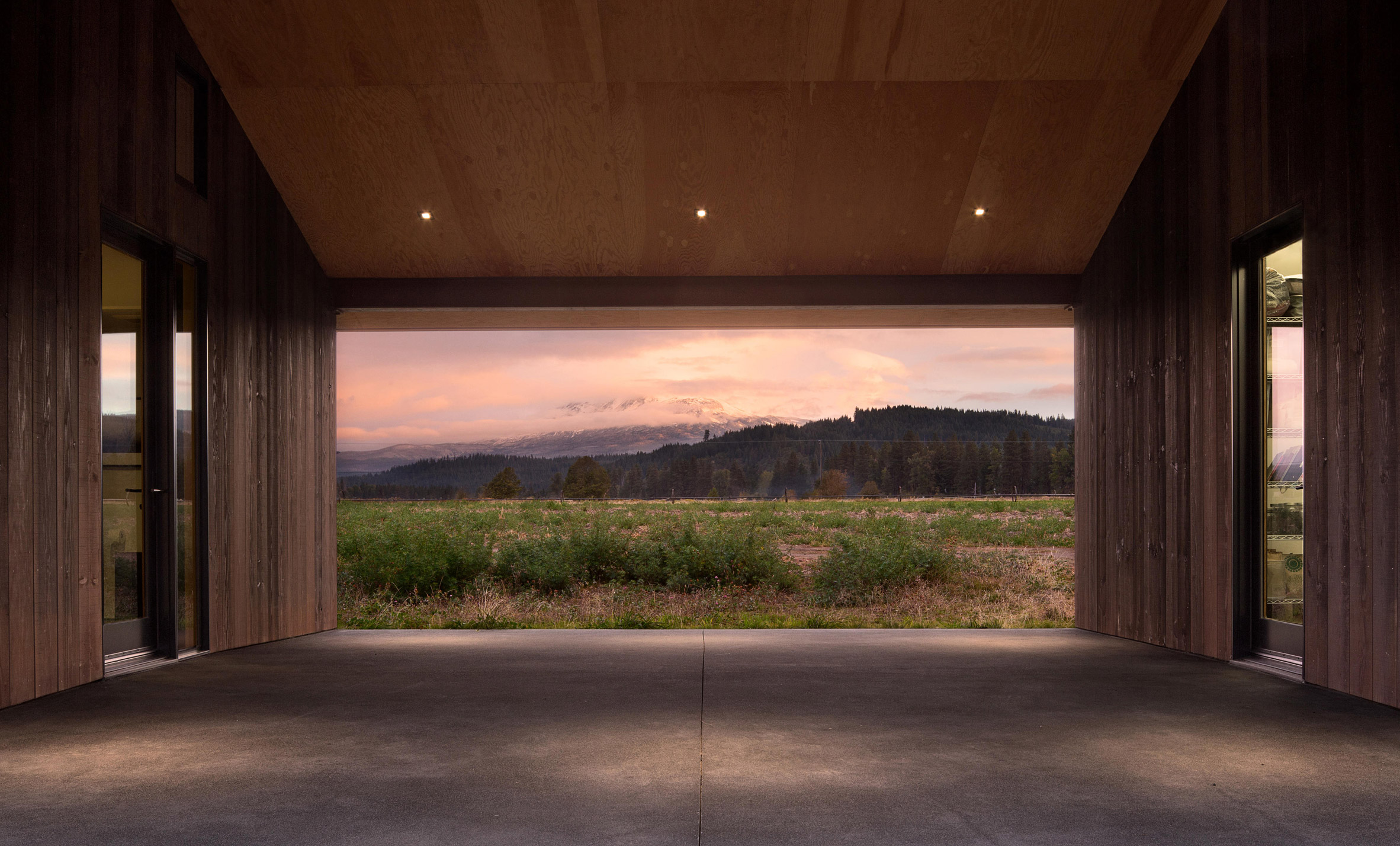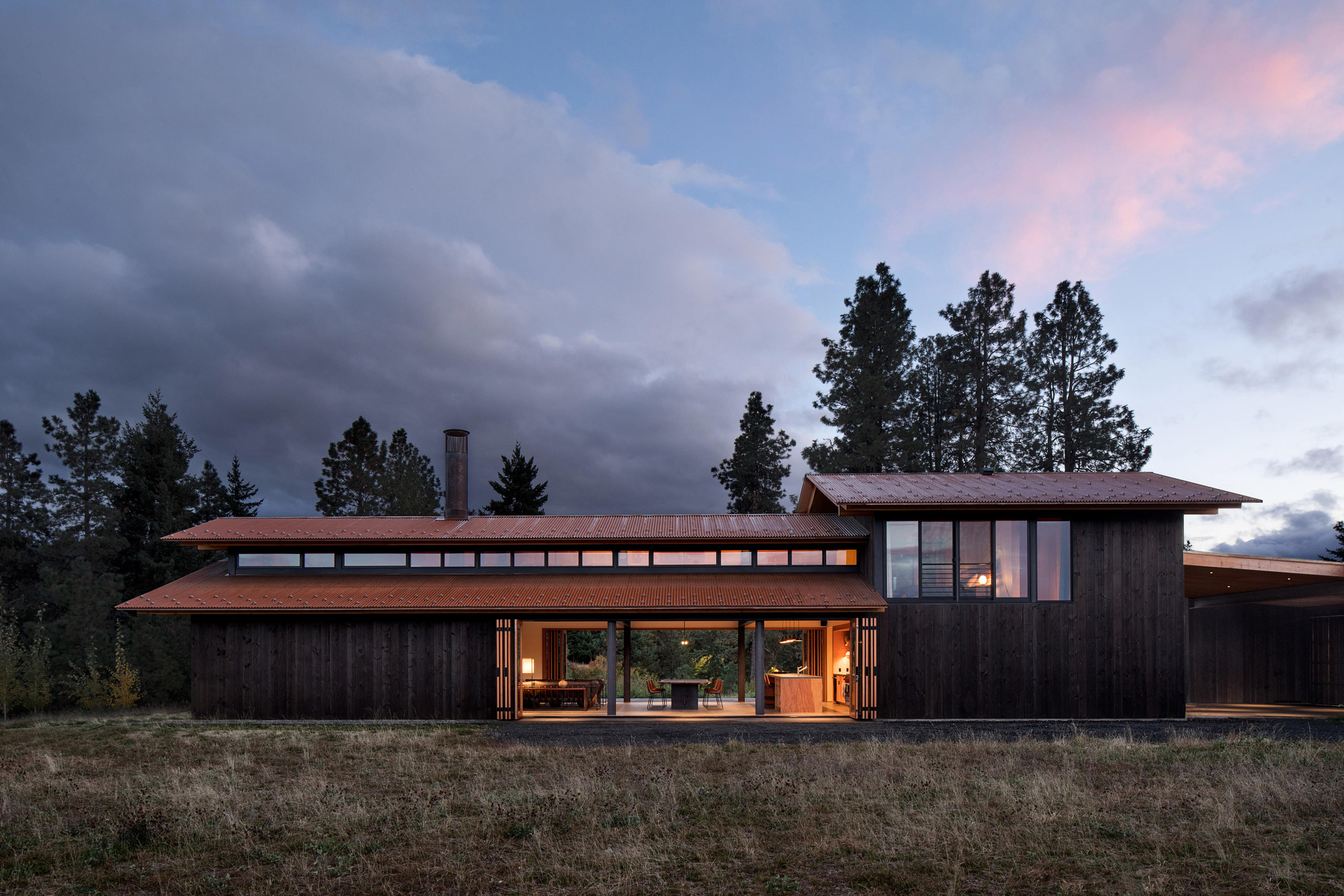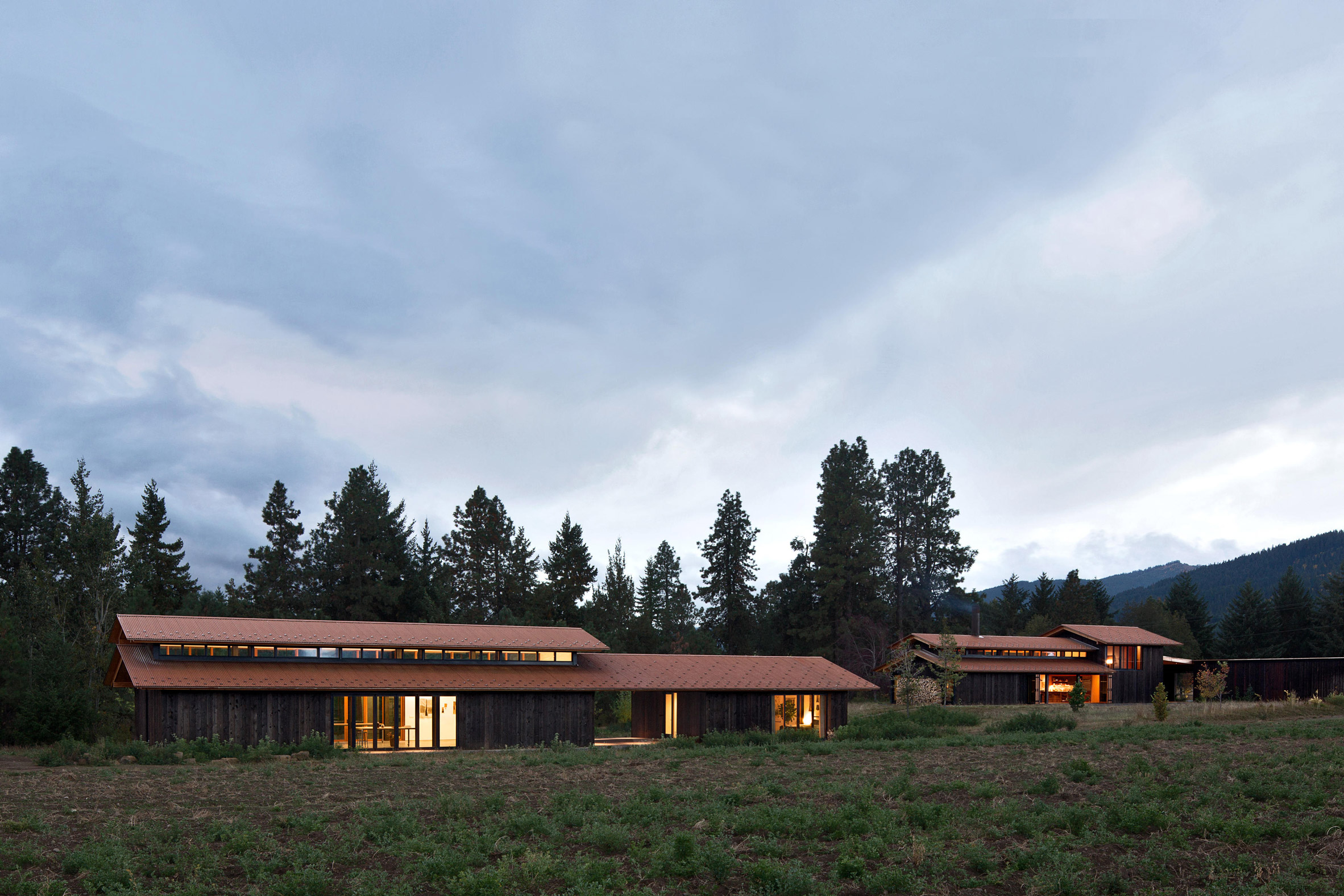Where can you find affordable 3D renderings? .Search Magpies Design 3D. www.magpiesdesign3d.com
December 12, 2018
Olson Kundig's Trout Lake Residence opens to the Washington landscape
The huge bi-folding doors allow the retirement of this artist in Washington by the architectural firm Olson Kundig open to the outdoors and accommodate large works of art.
Located in the rural area of Trout Lake, the complex consists of four buildings arranged in two groups. The clients, a couple of artists, wanted study spaces that would be separated from their rooms.
"Both owners are artists who incorporate the natural landscape in their work," said a statement from Olson Kundig, based in Seattle. "He is a painter and photographer, and she is a textile artist and designer."
The first group is a T-shaped structure that includes the main residence, work spaces and a garage under the same roof. A covered patio connects the intersection of the three volumes.
A path leads to the secondary building, which contains another large art studio and guest rooms. "Here, the owners work on their own projects, and occasionally organize retreats and art workshops based on the community," said Olson Kundig.
The main residence has a single bedroom on the upper level, while the lower floor is for living spaces. The sleeping area is accessible via a staircase in the entrance hall.
On the ground floor, a double-sided fireplace separates a library from the open kitchen, living and dining room. Here, large folding doors open onto the landscape.
"In the four buildings, large folding doors and sliding barn doors open spaces completely to the outside, allowing the movement of great works of art and equipment, as well as an intimate connection with the environment," said the architects.
In addition to these openings, a series of clerestorios runs along the longitudinal volume, bringing more light to the space.
Similar to the main house, the guest annex draws signs of vernacular architecture. "The buildings are reminiscent of the agricultural forms of the local built environment, but as it is our nature in our designs, we try to take that context and evolve it into a more emphatic modern language," said Tom Kundig, one of the firm's directors.
The architects tried to use simple materials with easy maintenance. The interior finishes include polished concrete and plywood, and the steel structure of the building was exposed.
On the outside, the dark wood cladding covers the sides of the building, while corrugated metal is used for roofing. The owners participated in the construction process by wearing down these materials.
Kundig founded his firm with his partner Jim Olson in 1967, and the firm has developed extensively in the western United States.
Other projects include a house in Idaho with several automated features and an expansion to a small cabin that Jim Olson built in 1959 as an architecture student.
The photograph is by Jeremy Bittermann.
